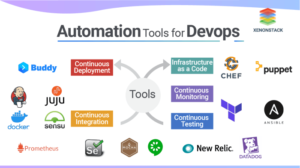
Cross-platform mobile computing tools are revolutionizing the way developers create applications, allowing them to build once and deploy across multiple platforms. This flexibility not only saves time but also optimizes resources, enabling developers to reach a broader audience without the need to master each platform’s specific requirements.
In this discussion, we will explore the advantages and disadvantages of using these tools, delve into popular frameworks, and analyze how cross-platform apps stack up against native applications, shedding light on their performance in various scenarios.
Cross-Platform Mobile Computing Tools
Cross-platform mobile computing tools have revolutionized the way developers approach mobile app development. These tools allow developers to build applications that can run seamlessly on multiple platforms, such as iOS and Android, from a single codebase. This method not only saves time and resources but also simplifies the maintenance and update processes. However, there are both advantages and disadvantages to consider when implementing cross-platform solutions.
Advantages and Disadvantages of Cross-Platform Tools
The use of cross-platform mobile computing tools comes with several notable benefits and some challenges. Understanding these can help developers make informed decisions about their projects.
- Cost-Effective Development: Developing a single codebase for multiple platforms reduces costs associated with building and maintaining separate apps.
- Faster Time to Market: With shared code, updates and new features can be deployed across platforms more quickly, enhancing responsiveness to market demands.
- Wider Audience Reach: Apps developed using cross-platform tools can reach a broader audience since they function on multiple operating systems.
- Consistency Across Platforms: Uniformity in user experience can be achieved, as the same code is used across different devices.
- Performance Limitations: Cross-platform apps may not perform as efficiently as native apps, especially for resource-intensive functionalities.
- Dependency on Frameworks: Relying on third-party frameworks can lead to issues if they lag in updates or become obsolete.
Popular Cross-Platform Mobile Development Frameworks
Several frameworks have gained popularity among developers for cross-platform app development. Each framework offers unique features tailored to various development needs.
- React Native: Developed by Facebook, it allows developers to build mobile apps using JavaScript and React. It offers native performance and a rich ecosystem of libraries.
- Flutter: Created by Google, Flutter uses the Dart programming language and enables developers to create visually attractive apps with a single codebase. It is known for its high performance and rapid development cycles.
- Xamarin: Owned by Microsoft, Xamarin allows developers to use C# to create applications that run on iOS and Android. It provides access to native APIs and components, ensuring a native look and feel.
- Ionic: Based on web technologies (HTML, CSS, JavaScript), Ionic is particularly suited for building hybrid mobile apps. It integrates well with Angular and React for enhanced functionality.
Performance Comparison: Cross-Platform Apps vs. Native Applications
When evaluating the performance of mobile applications, a comparison between cross-platform and native applications reveals critical differences that can influence development choices.Native applications are built directly for a specific platform, allowing them to utilize device capabilities fully, leading to faster performance and a smoother user experience. They tend to have a better integration with hardware features, making them ideal for applications requiring extensive processing or real-time functionalities, such as gaming or high-definition video processing.On the other hand, cross-platform applications, while generally slower than their native counterparts, have improved significantly in recent years.
Frameworks like Flutter and React Native have successfully bridged the gap, offering nearly native-like performance in many scenarios. However, the performance can still vary based on the complexity of the application and the underlying framework used.
“The choice between cross-platform and native development hinges on the app’s requirements, target audience, and available resources.”
This comparison emphasizes the need for developers to evaluate their specific requirements, potential user experience, and performance expectations when choosing between cross-platform and native app development. By understanding the pros and cons of each approach, developers can make strategic decisions that align with their project goals.
Integration with Web Hosting and Domain Names

Cross-platform mobile computing tools provide developers with the flexibility to create applications that run seamlessly on multiple operating systems. A critical aspect of deploying these applications is ensuring they are properly integrated with web hosting services and domain names. This integration is essential for the app’s accessibility and overall user experience.Cross-platform tools allow for straightforward integration with various web hosting services, making it easier to manage application backends and deliver content.
Most modern web hosting services support the deployment of applications built with frameworks like React Native, Flutter, or Xamarin. These platforms typically offer features such as easy setup, scaling options, and robust support for APIs, which are crucial for mobile applications that require frequent data exchanges.
Integration with Web Hosting Services
Integrating cross-platform mobile applications with web hosting services involves several key considerations. The following aspects are vital for ensuring a smooth integration process:
- Choose the Right Hosting Provider: Opt for a hosting provider that supports your application technology stack. Providers like Heroku, DigitalOcean, and AWS offer tailored services for mobile backends, including database management and scalable server solutions.
- Utilize RESTful APIs: Implementing RESTful APIs simplifies communication between your mobile application and the server, ensuring that data is transmitted efficiently and securely.
- Implement Continuous Deployment: Continuous integration and deployment (CI/CD) tools allow developers to automate the process of deploying updates to their applications, reducing downtime and ensuring users always have access to the latest features.
- Optimize for Performance: Use Content Delivery Networks (CDNs) to cache and deliver your application’s content quickly to users regardless of their geographical location, enhancing load times and overall performance.
Managing Domain Names
Domain name management is essential when deploying cross-platform mobile applications to ensure that users can easily access the app and its related services. Effective management practices include:
- Select a Memorable Domain Name: Choose a domain name that reflects your brand and is easy for users to remember and type.
- Ensure Domain Security: Protect your domain name with SSL certificates to secure data transmission and enhance user trust. This is particularly crucial for applications that handle sensitive user information.
- Use URL Redirection Wisely: Implement URL redirection to ensure that users accessing your app via different domain variations are directed to the correct site, improving user experience.
- Regularly Monitor Domain Status: Keep track of your domain name’s status and expiry dates to avoid losing ownership. Set reminders for renewals and consider auto-renewing to maintain continuous service.
Seamless Deployment on Web Hosting Platforms
To ensure a seamless deployment of cross-platform mobile applications on web hosting platforms, specific strategies should be employed:
- Test Before Deployment: Conduct thorough testing in a staging environment to identify and resolve issues before going live. This minimizes the risk of bugs affecting end-users.
- Monitor Application Performance: After deployment, use monitoring tools to track application performance and user engagement. This data can guide further improvements and updates.
- Ensure Scalability: Choose hosting services that allow easy scaling of resources to accommodate varying user loads, especially during peak times.
- Document Deployment Processes: Maintain comprehensive documentation of the deployment process to streamline future updates and facilitate collaboration among team members.
“Seamless integration of web hosting services with cross-platform mobile applications is crucial for enhancing user experience and application performance.”
The Role of Mobile Computing in E-Book Development

Mobile computing has transformed various industries, and e-book development is no exception. The integration of cross-platform mobile tools enables authors and publishers to create, distribute, and enhance e-books more efficiently than ever before. This flexibility facilitates a broader reach, allowing e-books to be accessible on multiple devices, which is crucial in today’s diverse technological landscape.Cross-platform mobile tools play a significant role in the creation and distribution of e-books by streamlining the development process and ensuring that content is easily accessible to a wider audience.
These tools allow for the simultaneous development of e-books across various platforms, such as iOS, Android, and web browsers, without the need for separate coding for each operating system. This not only saves time and resources but also ensures a consistent user experience regardless of the device being used. With rich media support, interactive features, and user-friendly interfaces, cross-platform tools empower developers to create engaging e-books that are more than just text on a screen.
Optimizing E-Books for Mobile Devices Using Cross-Platform Tools
Optimizing e-books for mobile devices is essential for providing readers with a seamless and enjoyable experience. The following guides highlight key strategies for achieving effective optimization using cross-platform tools:
1. Responsive Design
Ensure that e-books automatically adjust their layout based on the screen size and orientation. This guarantees readability on devices ranging from smartphones to tablets. Utilizing frameworks like Bootstrap or Flexbox can help in achieving this responsiveness.
2. File Formats
Choose the right file format for your e-book. Formats like EPUB and MOBI are highly compatible with various devices. Using cross-platform tools like Adobe InDesign allows for easy export to multiple formats, catering to different readers’ preferences.
3. Interactive Elements
Incorporate multimedia elements such as audio, video, and interactive quizzes to enhance user engagement. Tools like Unity or React Native can be used to create these interactive features that work seamlessly across platforms.
4. Text Size and Font Selection
Use legible fonts and allow users to adjust text size within the e-book. This feature is crucial for accessibility, ensuring that all users have a comfortable reading experience.
5. Loading Speed Optimization
Optimize images and other media files to reduce loading times. Using tools like TinyPNG for image compression can significantly improve performance on mobile devices.
6. Testing Across Devices
Regularly test e-books on different devices and operating systems to catch potential issues. Emulators and cloud-based testing platforms can assist in simulating various environments for thorough testing.
By prioritizing mobile optimization, e-book developers can significantly enhance reader satisfaction and engagement.
Successful applications built using cross-platform technologies are a testament to the effectiveness of these tools in e-book development. Notable examples include:
Amazon Kindle
Though primarily known for its proprietary format, Kindle’s application supports cross-platform features, enabling users to read e-books seamlessly across devices.
Apple Books
This application showcases a responsive design that adapts to various iOS devices, providing a smooth reading experience enriched with interactive capabilities.
Google Play Books
This platform allows users to access and read e-books across different devices, utilizing cloud technology for synchronization and storage.These examples illustrate the potential of cross-platform mobile tools to create outstanding e-book applications that cater to a diverse audience while enhancing the overall reading experience.
Final Summary
As we’ve seen, cross-platform mobile computing tools offer a wealth of benefits while presenting some challenges. By understanding these tools, developers can make informed decisions that enhance their projects, streamline their workflows, and ultimately create more engaging applications for users across different devices.
FAQ Section
What are cross-platform mobile computing tools?
These are development frameworks and tools that allow developers to create applications that can run on multiple mobile operating systems with a single codebase.
How do cross-platform tools impact app performance?
While cross-platform apps may not perform as well as native apps in all scenarios, they can achieve competitive performance levels with proper optimization.
Can cross-platform tools be used for e-book development?
Yes, they can streamline the creation and distribution of e-books, providing tools that optimize content for various mobile devices.
What are some popular cross-platform mobile development frameworks?
Some widely used frameworks include React Native, Flutter, and Xamarin, each offering unique features and benefits for developers.
How can I ensure the best deployment of my app?
Utilizing best practices such as thorough testing, choosing reliable web hosting, and managing domain names effectively can enhance deployment success.





